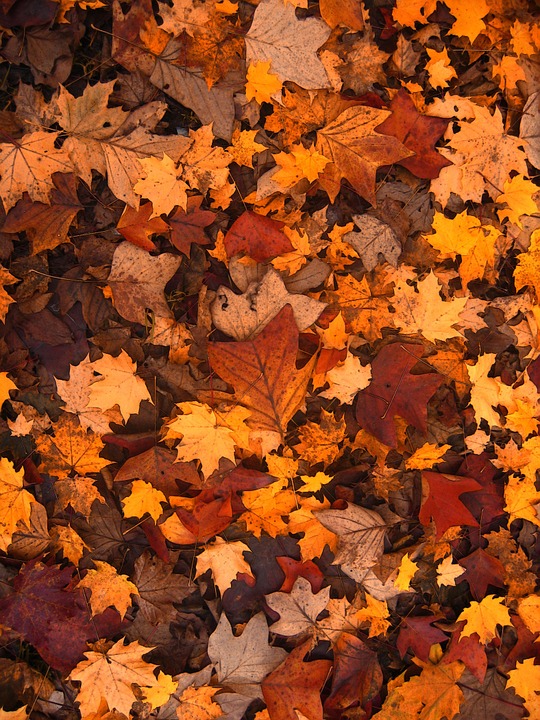“To Leave or Not to Leave” (the Fallen Leaves), That is the Question!
Pollinator Junction/ Life Exhibit
‘Tis it nobler in the mind… to blow away the foliage debris in the fall or suffer the consequence of a messy appearance?
This is the question that may haunt some homeowners who have a choice in the way they approach their landscape upkeep at the end of the season.
Many end up straddling the “eco-friendly” fence by keeping the front more traditionally manicured and the back yard managed in a more relaxed manner by allowing leaves in the garden but off the lawn.
Some landscape arrangements leave few other options. Landscape fabric and decorative rocks create an unforgiving barrier that disallows any organic matter to re-enter the soil. Landscape fabric and rock topdressing cause damage. Leaves become homeless, huddled in crunchy and eventually mucky masses in random places in invisible wind traps in front of shrubs. The brown clumps dirty the decorative rocks, cover landscape lighting and become weed seed traps and weed starter gardens.
Are there other tidy front yard options? In my experience, yes but initially changing to them are not easy or inexpensive. All changes seem to require lengthy dialogue, but be assured a mature landscape adds to home value. To the end that common sense prevails, it becomes much easier to make changes that are definitely more eco-friendly!
And in the backyard, do I recommend an “abandoned look”? A leaf fest? Or are clippers and rakes even allowed?
No, yes,yes! Leaves have their place, preferable where they fall, but sometimes that’s not practical. But do NOT chop, slice and dice or mangle and sputter them!
Instead, gently rake them off paths and off the shoulders of shrubs. Initially it’s also best to brush them off the waning stems and crowns of nearly retired perennials too. Tuck your garden to bed by using leaves as a light eco-blanket thinly spread between plants and shrubs creating a natural air buffer. This allows a transition temperature zone between the normal seasonal dropping air temperature and the more stable ground temperature making it easier for many plants to survive our fickle winter fluctuations.
Excess leaves can be raked into multiple small lose piles and left in less noticeable locations. Avoid piled leaves as they tend to store moisture and heat. Eventually they will become grand compost but hurrying the process will kill off beneficial insects, their eggs and our precious butterfly cocoons!
Comment by George T Koprivica:
Interesting! We have clay soil. Each Fall, I bag all leaves, lay them out in a long row and run a mower over them several times until they resemble a coarse powder. I suck them up in my mower bag, lay them to rot by our back fence over winter. In the Spring, I incorporate the rotted leaves with the clay soil and gypsum and fertilizer using a roto tiller to make gardens. Before, we had no worms – now we have healthy night crawlers that digest the leaves and enrich and aerate the soil. Rotting fruit – peaches, apples, etc. in trenches over winter is a great way to feed worms and enrich the soil. Do I pay $1.00 a bag for the trash man to haul them away or spend a little effort and recycle? We put gardens on all sides of our house at the foundation. The soil settled over the years and channeled water close to the house. Now, gardens are much higher than the lawn, diverting water away. Also, any water that overflows gutters waters irises, day lilies, hostas, lambia, ferns, or front landscaped gardens. No more water in our sump pump! Leaves are a valuable asset to enrich poor soil.







 BACK TO ALL POSTS
BACK TO ALL POSTS


